TARS
Revolutionizing the code generation experience for developers using A8Studio.
TARS is a powerful code generation and explanation tool designed specifically for A8Studio. With its advanced capabilities, including natural language code generation, comprehensive code explanations, interactive support, and seamless integration, TARS enhances developer's ability to write code more efficiently and accurately.
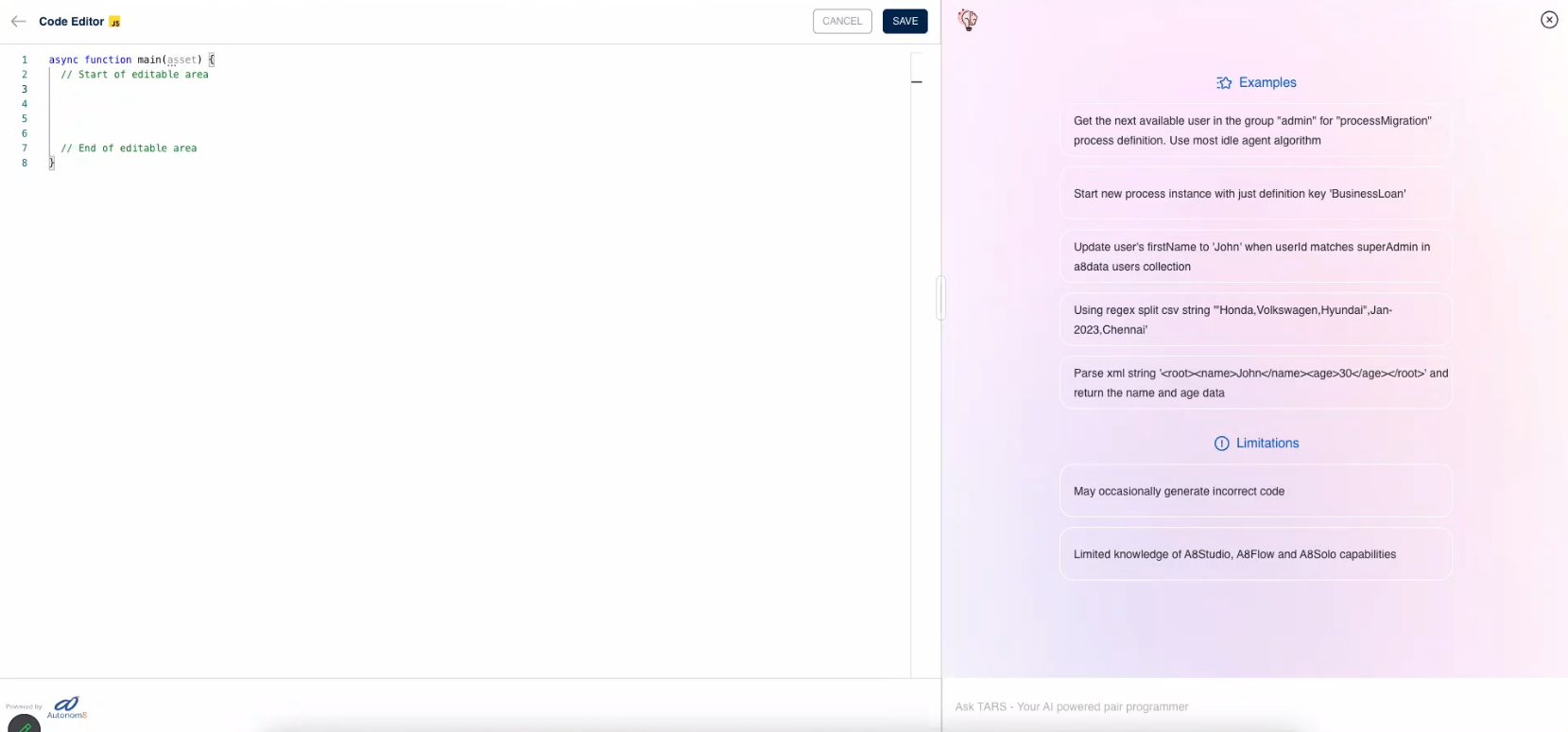
TARS is powered by the GPT-3.5 Turbo model.
User Interface
TARS provides an intuitive user interface that offers an immersive coding experience. With a full-screen view, developers can seamlessly transition between the code editor and the conversational interface powered by TARS. This streamlined design allows for efficient code generation and fosters a smoother workflow.
Code Generation (Natural Language Processing)
The standout feature of TARS is its ability to generate code from natural language queries. By simply accepting a question or request in plain English, TARS can generate code snippets tailored to A8Studio. Whether it's handling exceptions, filtering data, or implementing specific functionalities, TARS provides developers with context-aware code suggestions.
Here are a series of examples that show you how TARS works:
Example 01
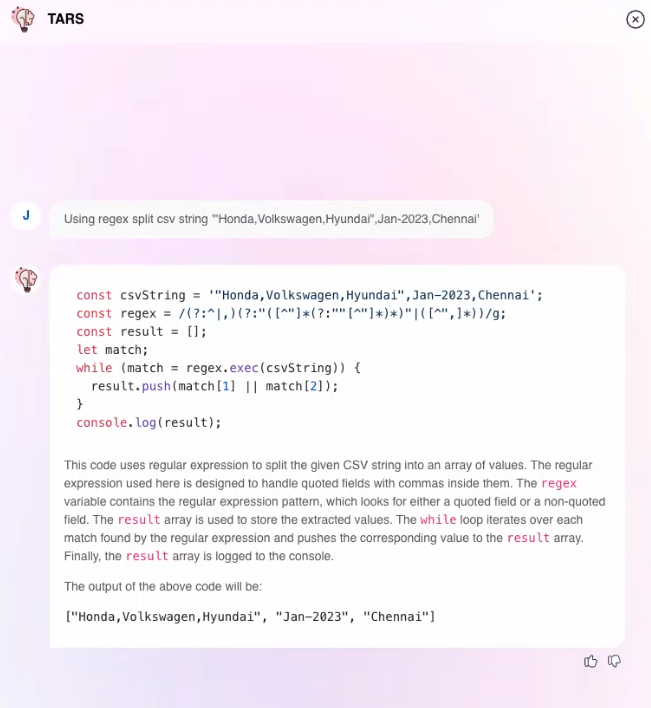

Here, TARS not only provides us with the regex code but also offers a detailed explanation of it. A feature that will be highly appreciated by even seasoned developers. Additionally, you can observe how the context is maintained between the two questions.
However, currently, there is a limit to the maximum number of questions that we can send to OpenAI due to context constraints. Therefore, when you are finished with the questions, you will need to clear the context.
This resets the context, allowing you to start again with a fresh question.
Please note that closing the code editor will also reset the context.
Example 02
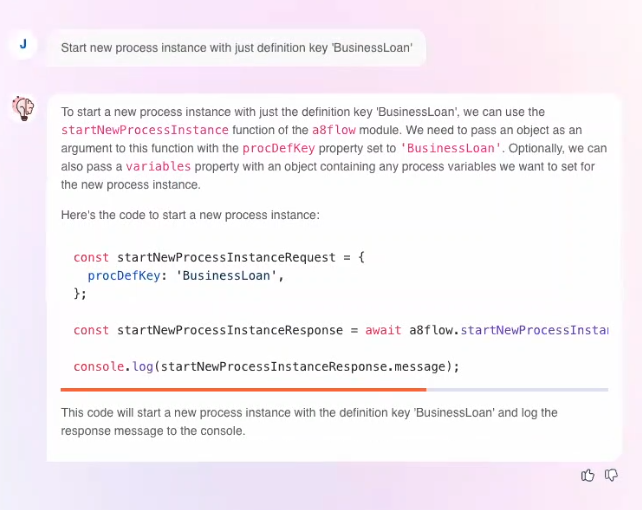
In this example, TARS demonstrates its integration with A8Studio's 'a8flow' function, showcasing its ability to utilize the function within the Studio environment.
Example 03
Let's examine a scenario where TARS initially provides an incorrect suggestion but corrects itself after a second prompt from the user.

So, when the user points out that the 'a8flow' function doesn't have a "find" method, which TARS wrongly suggested, TARS fixes its code based on the user's follow-up comment.
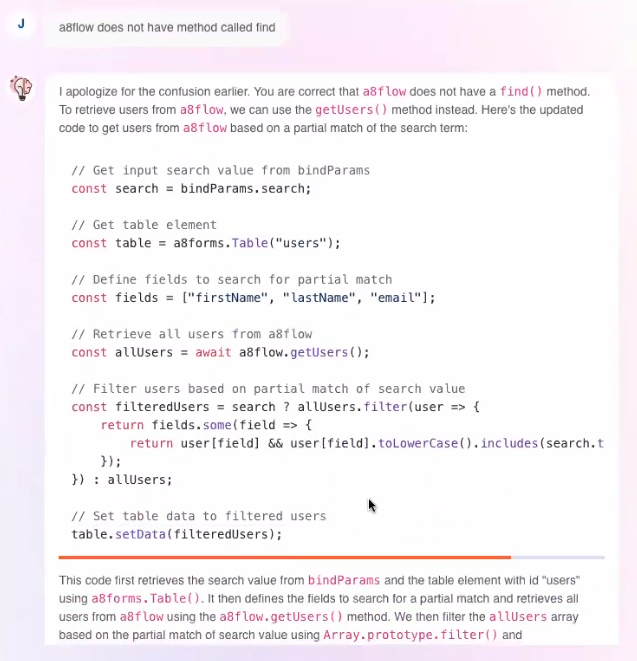
Example 04
Here's an example that demonstrates how TARS offers different code suggestions for the same question based on the question's context.
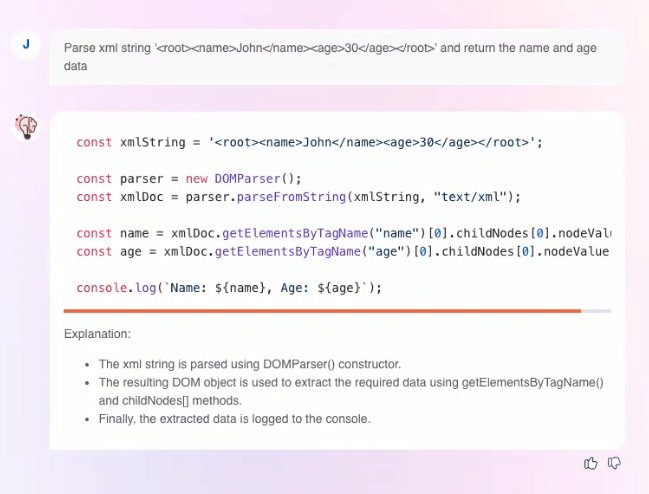
In this case, it utilizes DOMParser because it is running in an in-line form editor, which means the code will run from the browser.
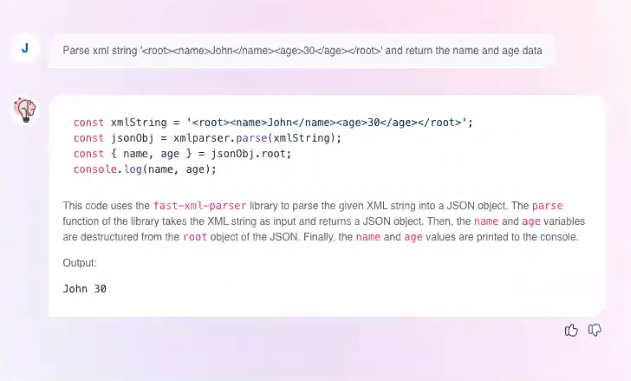
However, when running the code on a server in A8Studio, TARS suggests using xmlparser as it can run on Node.js and the DOMParser isn't available. It's important to note that TARS hasn't used any xmlparse other than the one exposed in A8Studio.